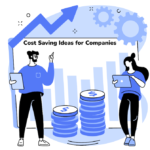What is a business disruption?
 We can see the changes happening in lives and everywhere else these days and technology has been the driving force behind most of these changes. The broad field of business has been no exception either.
We can see the changes happening in lives and everywhere else these days and technology has been the driving force behind most of these changes. The broad field of business has been no exception either.
Business disruption is the new buzz going around in the business landscape these days. It describes the disruptive challenges to the business domain, particularly the services sector, thrown by the introduction of the customer-centric, faster and cheaper financial services. It refers to the widespread use of technology in all functions of business operations. It is a digital revolution, to say the least. Nowadays, we see software replacing paper-based applications everywhere, which can be a simple example of business disruption in operation.
Examples of business disruption
To begin with, we will discuss how business disruption has changed the very way of day-to-day operations in one of the most important sectors of business, i.e, the financial services sector.
It has made distinct changes to funding, loan management, asset management, money transfers etc and thus has become indispensable to all customer-centric processes.
The primary feature that has made business disruption important to financial institutions is its mobility. In modern times, smartphones have provided the consumers an easy method to interact with financial institutions like banks and also to gain access to their bank accounts in real time. As more and more applications have sprung up, with new features and innovations – the expectations of the customers have risen to new heights. These days, the digital revolution, coupled with the new-found mobility has changed the nature of banking operations altogether. Gone are the days when the customers had to stand in long queues to deposit money, to request for checkbooks and to conduct trades.
The advent of smartphones gave rise to another trend, i.e, the sudden surge of online payment applications and their integration with bank accounts. This has triggered everything in online mode- investments, transfers, shopping and many more. Along with it, came the need for smarter, faster and more reliable security protocols to protect customer data. As the threat of intruders loomed large through the use of sophisticated malware, ransom-ware and phishing; businessmen and consumers require new-age security products such as machine learning, artificial intelligence and the internet of things-in order to protect their data, assets and transactions.
Artificial Intelligence and Internet of Things as agents of business disruption
Both the Artificial Intelligence (AI) and the Internet of Things (IoT) have been recognized as drivers of the worldwide scenario of business disruption in the year 2018. Moreover, according to business experts, IoT is in need of AI for a successful implementation of transformation and business growth.
IoT is rightly referred to by industry insiders as the primary driver of the 4th Industrial Revolution and it has triggered a wide array of technological changes across many folds of business. Due to these technological advancements, about 50 million devices are expected to be interconnected by the end of 2020. Some other figures also suggest similar advancements in the healthcare sector where the estimated growth is projected to be $ 117 billion by 2020. The Internet of Things or IoT will be the driving force behind all these advancements. IoT has the potential to bring in exciting opportunities to the personal lives of the consumers and, at the same time, will do a world of good towards improving productivity, safety and efficiency for business operations.
Also, the increase of connected devices means increasing emphasis of data in business operations. Data has amazing potential to provide important insights for any business and , at the same time, come up with new challenges towards analyzing those data for ensuring business advantage. This is where artificial intelligence comes in. AI applications make perfect sense of these huge amounts of data to improve existing business processes.
The powerful combination of AI and IoT
Successful organizations these days, implement the analytic abilities of AI to the data collected by IoT to identify and apprehend patterns and make informed business decisions. This brings in the advantages of intelligent automation, proactive intervention and highly personalized experiences and benefits both the companies and the consumers alike. It also explores ways for the connected devices to work better and work in combination, in a more user-friendly manner. This, in turn, results in even higher adoption rates for these devices.
NLP- another important branch of AI
As more numbers of connected devices get integrated seamlessly into personal and business environments, another branch of AI is becoming gradually important for IoT. This is the branch called the Natural Language Processing(NLP) that enables more effective conversations between these devices.
NLP was devised with a view to enabling human conversations with computers in both spoken and written contexts, through the use of natural human languages, in lieu of complex machine languages. These new and improved conversational systems can make it possible for the users to extract instant and round-the-clock assistance and information from their connected devices. NLP and virtual assistance, backed up by the right technologies and their unlimited integration capabilities, can lend themselves perfectly to this exciting world of IoT.
A careful approach is the key
While it is easy to recognize the powerful impact made by the combination of AI and IoT on business operations, organizations would do well to be careful in their application of AI to the connected devices. As per analysts, pure AI is perfect for analysis of the data collected by IoT but a careful approach needs to be taken while applying AI in providing service and support for users.
Researchers also suggest that the conversational systems should not be based on NLP entirely, rather a combined approach of human intelligence and self-learning should also be applied in addition. While applying AI to consumer service, business control should only be provided to the reliable responses of user interactions.
The footnote:
With new advancements in the field of IoT predicted in near future and AI continuing to transform and streamline business processes and B2C interactions- organizations are increasingly looking at this combined force as an important tool of business disruption.
Thus, they are ensuring business growth and making lives easier for the consumers too.
For more blogs posts please read https://mdsonline.co.in/blogs/ and to know the about the services we can bring to the table as a virtual assistant company please read our profile on upwork https://www.upwork.com/fl/navinmirania








